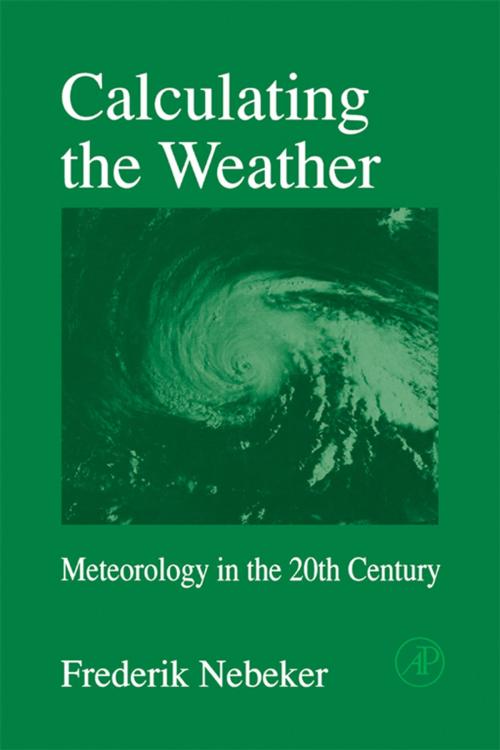Calculating the Weather
Meteorology in the 20th Century
Nonfiction, Science & Nature, Science, Other Sciences, Meteorology, Mathematics, Reference & Language, Reference| Author: | Frederik Nebeker | ISBN: | 9780080528410 |
| Publisher: | Elsevier Science | Publication: | May 18, 1995 |
| Imprint: | Language: | English |
| Author: | Frederik Nebeker |
| ISBN: | 9780080528410 |
| Publisher: | Elsevier Science |
| Publication: | May 18, 1995 |
| Imprint: | |
| Language: | English |
During the course of this century, meteorology has become unified, physics-based, and highly computational. Calculating the Weather: Meteorology in the 20th Century explains this transformation by examining thevarious roles of computation throughout the history of meteorology, giving most attention to the period from World War I to the 1960s. The electronic digital computer, a product of World War II, led to great advances in empirical, theoretical, and practical meteorology. At the same time, the use of the computer led to the discovery of so-called"chaotic systems,"and to the recognition that there may well be fundamental limits to predicting the weather.
One of the very few books covering 20th century meteorology, this text is an excellent supplement to any course in general meteorology, forecasting, or history of science.
Key Features
* Provides a narrative account of the growth of meteorology in the 20th century
* Explains how forecasting the weather became a physics-based science
* Studies the impact of the computer on meteorology and thus provides an example of science transformed by the computer
* Describes three traditions in meteorology:
* The empirical tradition of gathering data and making inferences
* A theoretical tradition of explaining atmospheric motions by means of the laws of physics
* The practical tradition of predicting the weather
* Analyzes the increasing role of calculation within each of the traditions and explains how electronic digital computers made possible many connections between traditions
During the course of this century, meteorology has become unified, physics-based, and highly computational. Calculating the Weather: Meteorology in the 20th Century explains this transformation by examining thevarious roles of computation throughout the history of meteorology, giving most attention to the period from World War I to the 1960s. The electronic digital computer, a product of World War II, led to great advances in empirical, theoretical, and practical meteorology. At the same time, the use of the computer led to the discovery of so-called"chaotic systems,"and to the recognition that there may well be fundamental limits to predicting the weather.
One of the very few books covering 20th century meteorology, this text is an excellent supplement to any course in general meteorology, forecasting, or history of science.
Key Features
* Provides a narrative account of the growth of meteorology in the 20th century
* Explains how forecasting the weather became a physics-based science
* Studies the impact of the computer on meteorology and thus provides an example of science transformed by the computer
* Describes three traditions in meteorology:
* The empirical tradition of gathering data and making inferences
* A theoretical tradition of explaining atmospheric motions by means of the laws of physics
* The practical tradition of predicting the weather
* Analyzes the increasing role of calculation within each of the traditions and explains how electronic digital computers made possible many connections between traditions















